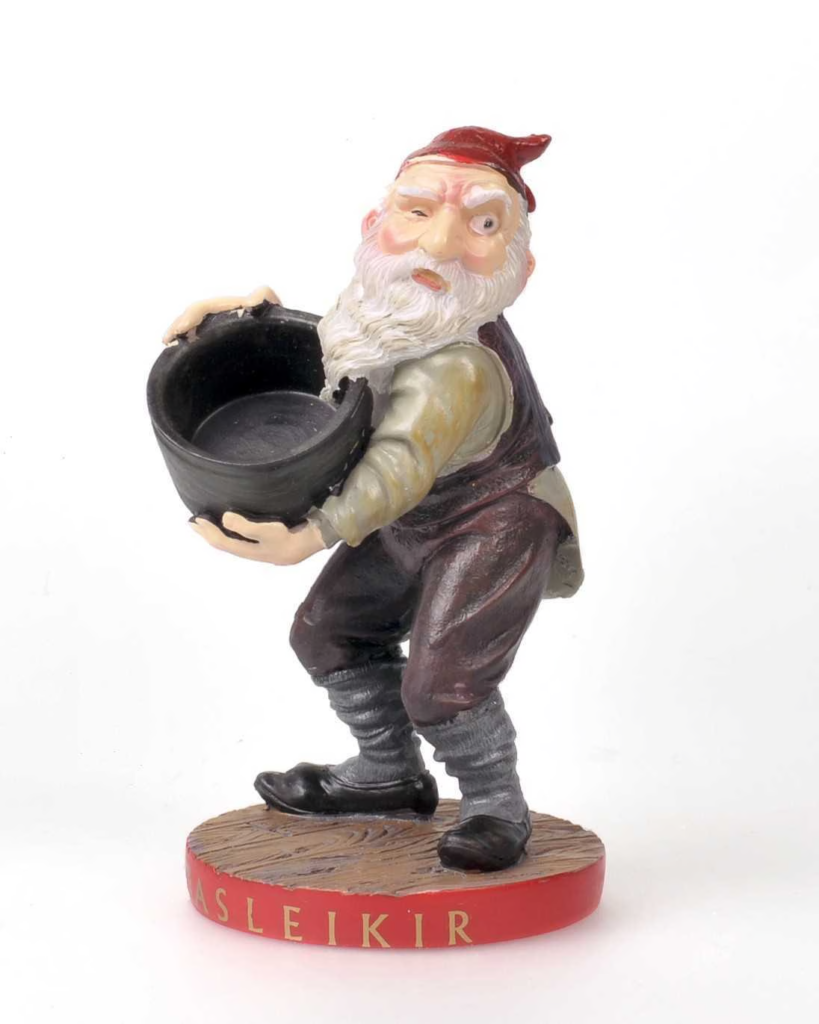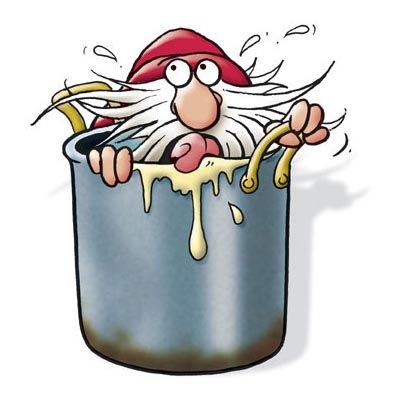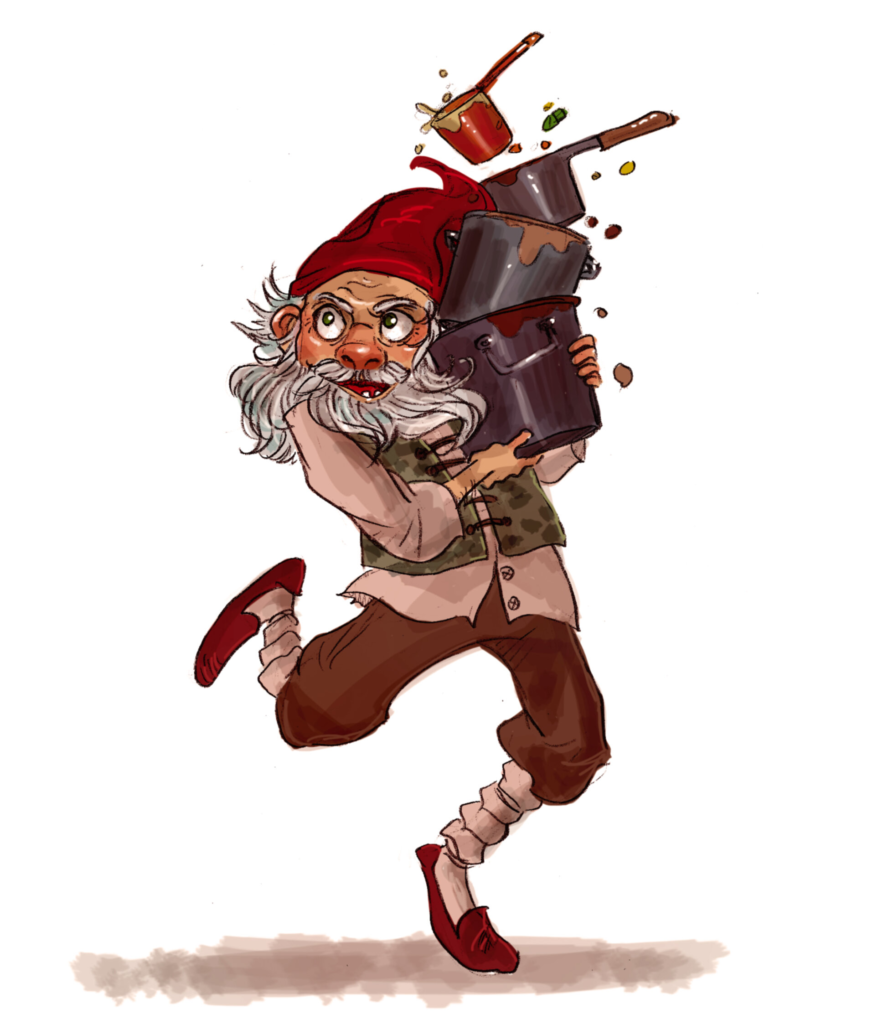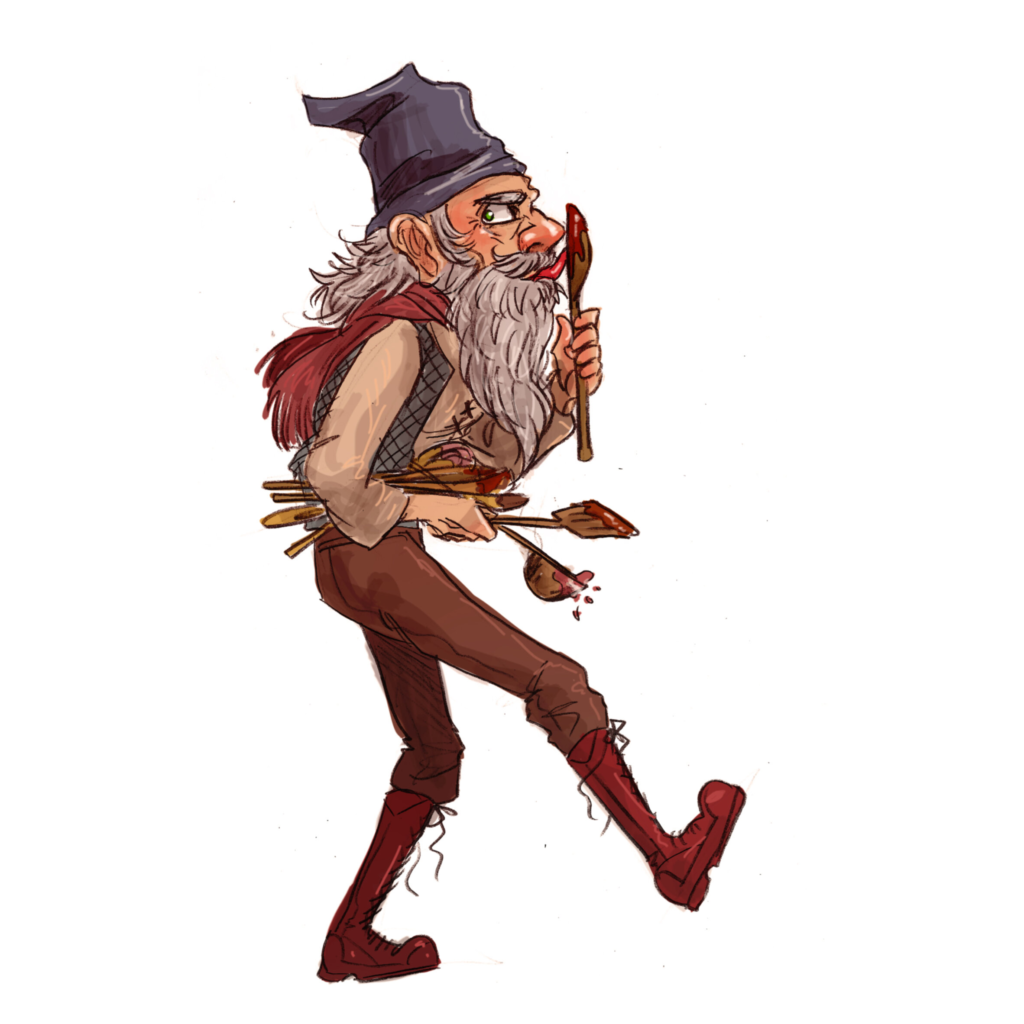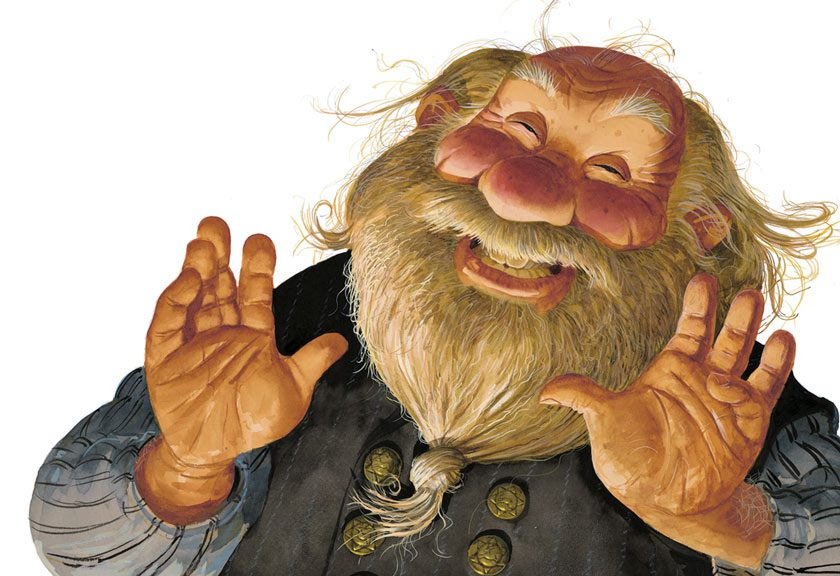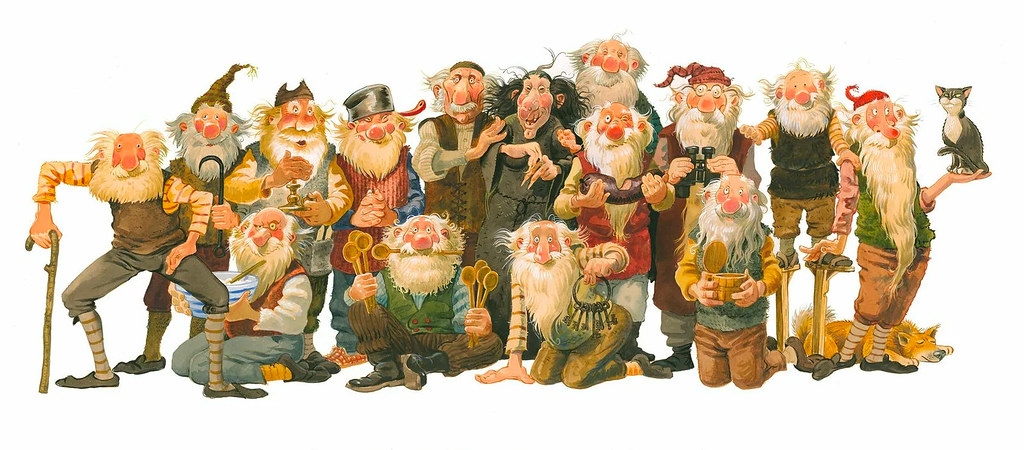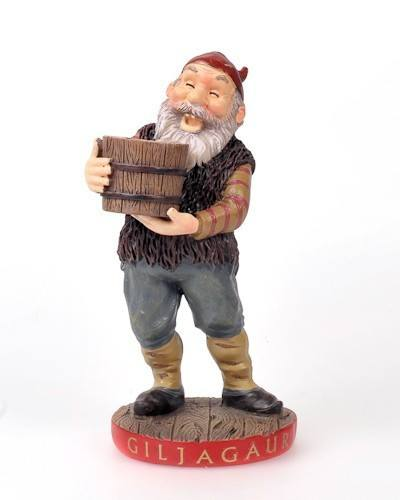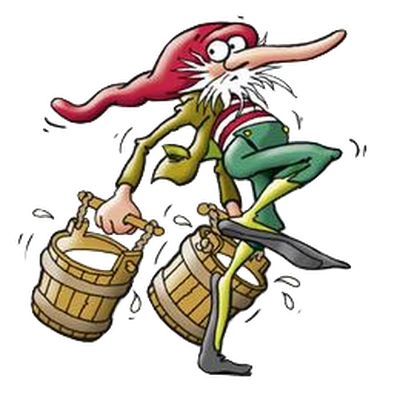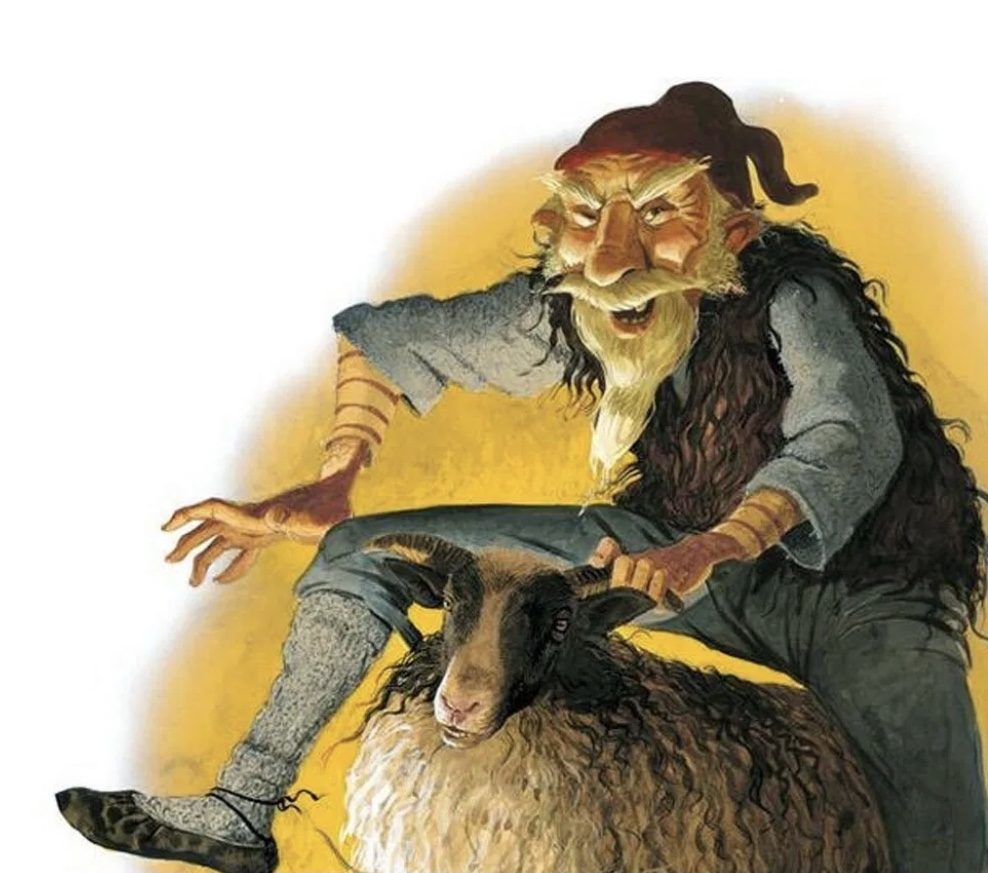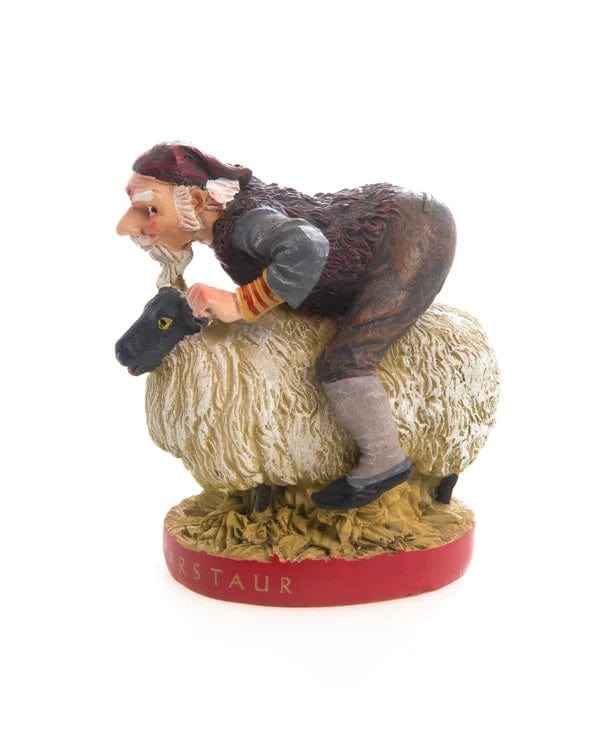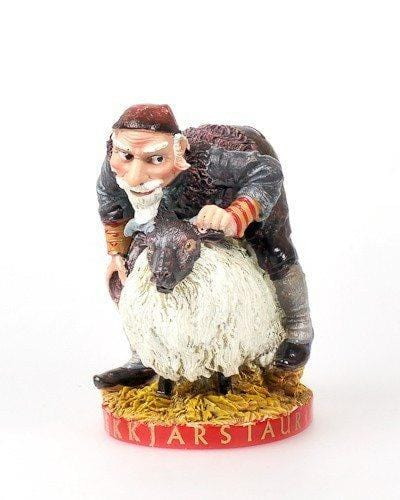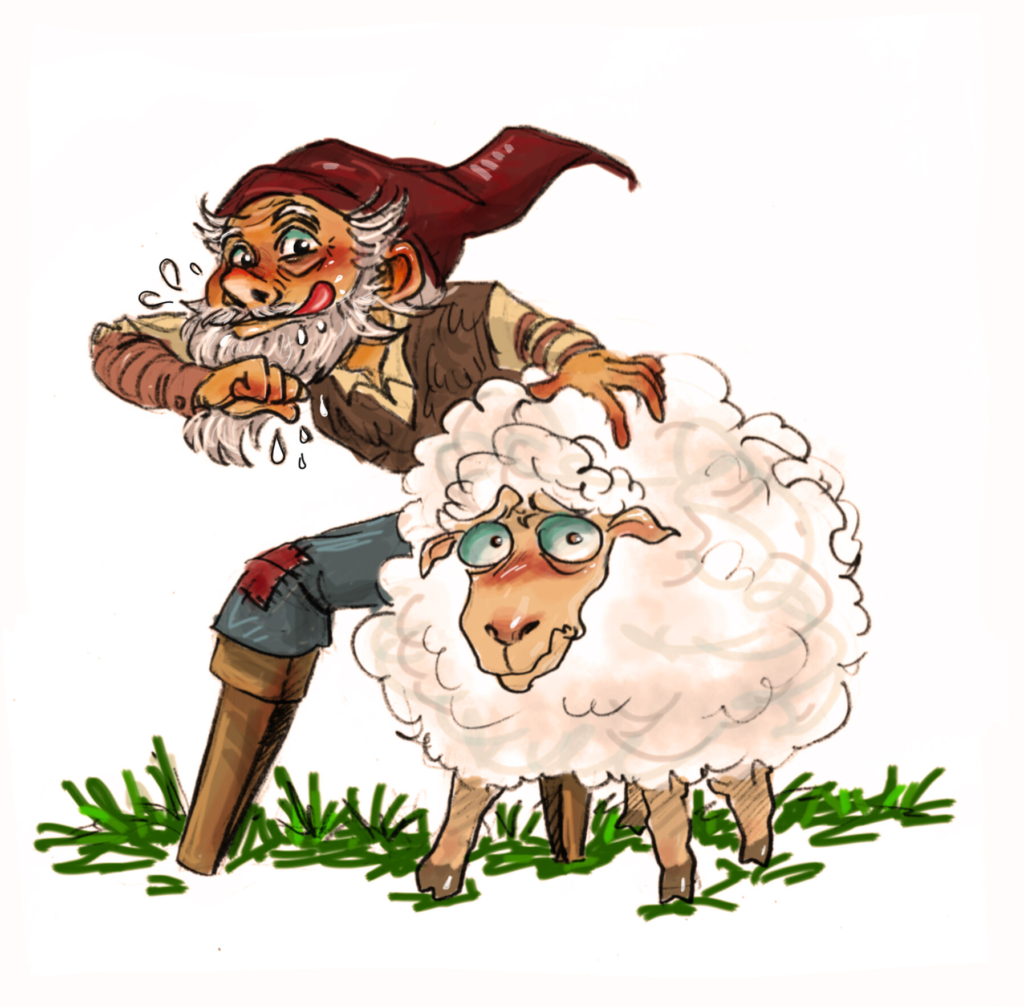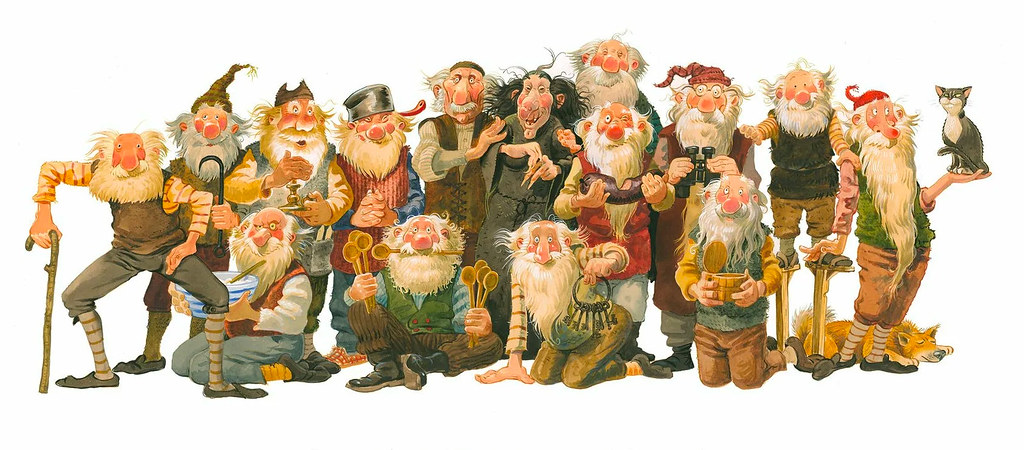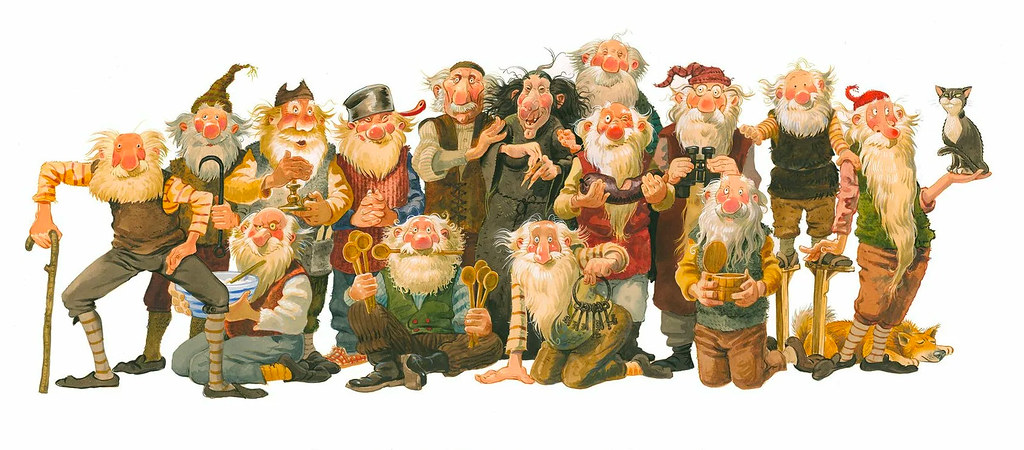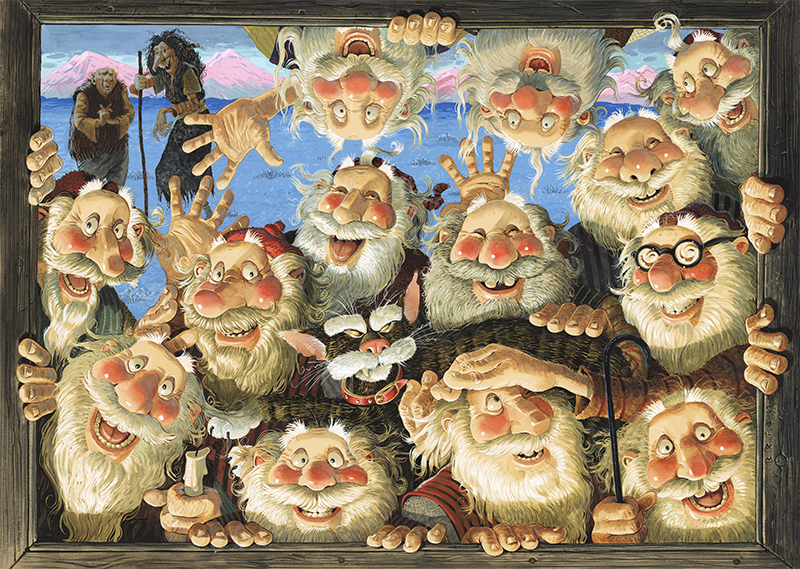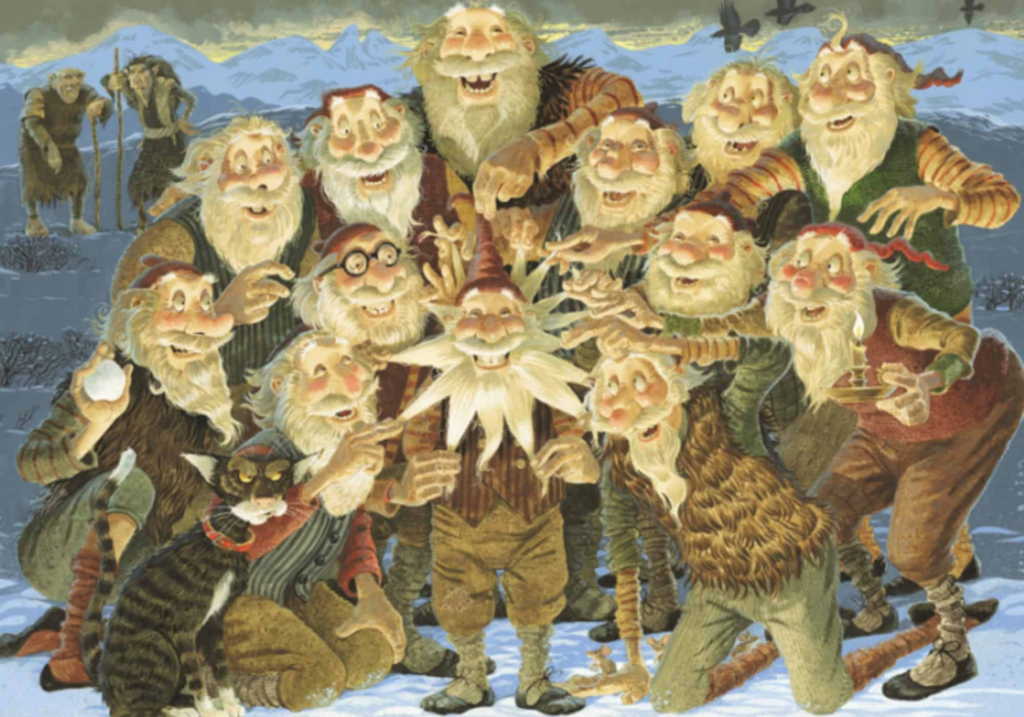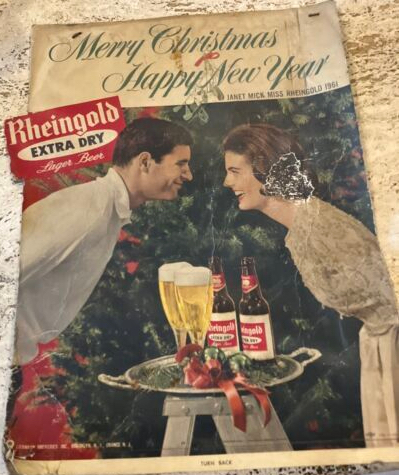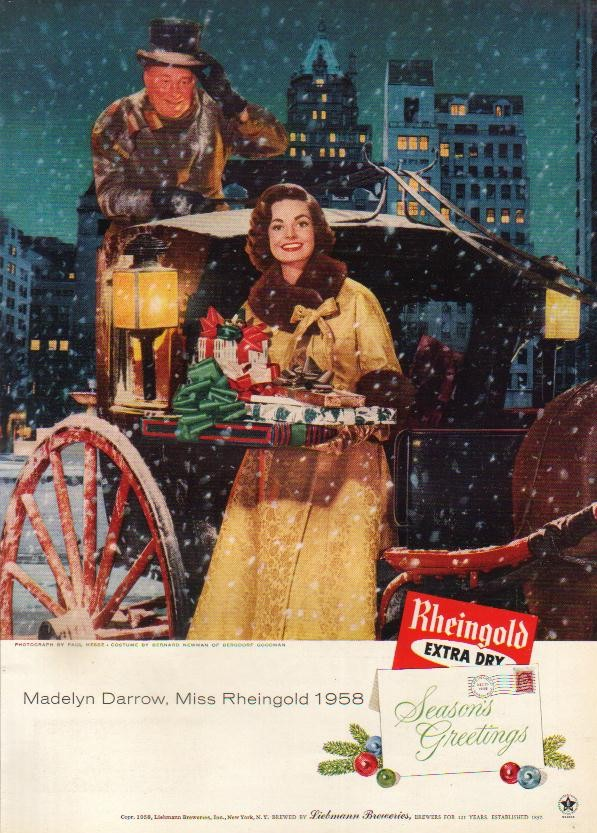
Hopefully you already saw my post on Tuesday with an overview of the Icelandic tradition of the Yule Lads. If you haven’t, go back and read that first so this will make more sense. According to folklore, today — December 17 — is the day when the sixth Yule Lad arrives.
The sixth Yule Lad’s name is Askasleikir, which translates as Bowl-Licker. His particular brand of mischief is hiding under beds, waiting for someone to put down their askur (a type of bowl with a lid used instead of dishes), and then stealing it so he can lick whatever remaining food is inside.

Here’s how he’s described in the 1932 Icelandic poem, “Yule Lads,” by Jóhannes úr Kötlum:
Bowl Licker, the sixth one,
was shockingly ill bred.
From underneath the bedsteads
he stuck his ugly head.
And when the bowls were left
to be licked by dog or cat,
he snatched them for himself
– he was sure good at that!
Bowl-Licker arrives each year on December 17, and leaves again on December 30.

And here’s a more thorough explanation, by Robert Nelson, on Medium.
Askasleikir, or the Bowl-Licker, performs a task that should be unsurprising at this point. If there is food leftover in your bowl after you put it away, he will come and lick it up. Yes, he is a continuation of the theme of a small, menacing little guy who comes to steal food, but this one makes a little less sense to the discriminating 21st-century mind.
You see, in the Iceland of yesteryear, “Icelanders ate from lidded wooden bowls that they sometimes kept under the bed or on the floor.” So Askasleikir would hide under your bed, and emerge to swipe the remains from your bowl if you put it away or down on the floor without thoroughly eating your meal or cleaning the bowl. The “askur” was a particular type of wooden bowl that had a lid (primitive Tupperware). And so Askasleikir, as you might expect, emerges to lick these special kinds of bowls.
Now, up to this point, all of the Icelandic Yule Lads have been, for lack of a better descriptor, petty thieves. As cautionary tales, they might be mobilized to encourage children to finish their dinners and thoroughly clean their living spaces before going to bed.

And here’s another, from Iceland24:
The sixth, Bowl Licker,
Was without a peer.
-From under the beds, he
Pushed his ugly head.When the bowls were placed
In front of cat and dog,
He cunningly snatched them
And licked till he was full.Askasleikir (Bowl Licker) is the 6th in the Yule Lads gang to visit during the Christmas period. He arrives on the 17th of December. I don’t want to make it sound like I am partial – because in fact I am not – but I think Askasleikir is very sly. At least, more than the majority of his brothers.
In the old times, especially in farmhouses, Icelanders used to eat from lidded bowls sitting on their beds. The lidded bowls prevented the food from getting cold and were usually placed on the floor or under the bed in between bites.
Askasleikir specialized in hiding under furniture waiting for these moments and refined his art over the years. When something edible is placed on the floor, he stretches his arms and steals it.
I suspect it may be this gentleman’s fault that children are so afraid of monsters hiding under the bed at night.

The 13 Yule Lads, Mom, Dad and Cat:




